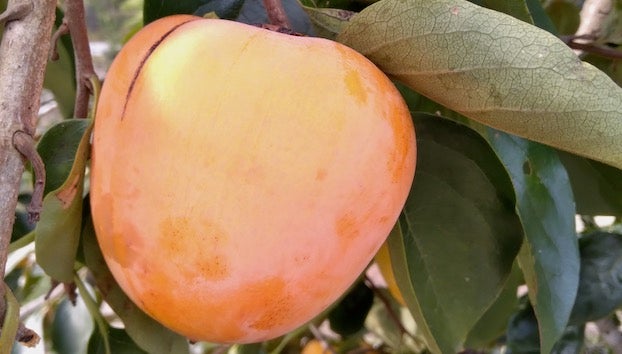What is this orange fruit?
Published 5:17 pm Thursday, October 20, 2022

- Certified Master Gardener Volunteer, Dan Bergbauer took this photo of a persimmon.
|
Getting your Trinity Audio player ready...
|
I am teaching Master Gardener training series right now at the Beaufort County Center. This is where folks like you can come and learn about horticulture to become a certified Extension Master GardenerSM Volunteer (EMGV). Like any good educational program, we like to have show and tell and sharing time. One of the certified EMGV’s brought in this funny looking orange fruit recently to share. Some of the students knew what it was and some did not.
Folks have different reasons for becoming Master Gardeners. The largest class to date was in 2007 when there were roughly 45 new students. These days, it’s hard to find 15 that want to commit to taking the classes and volunteering. That class of 200 still has several active volunteers! I asked what made that class so large and they said it was because folks moved into the area and needed to know what was growing on their properties.
This is a very common scenario that I receive calls about. Folks move into Eastern NC from the Western part of the state or even out of state and they have no idea about the plants around them or even how to grow things in our little part of the world. I had another home visit just last week in which the folks were from Charlotte. They had recently moved into town and wanted to really work on growing things in the landscape that were edible, from garden plants to fruit and flowers. They were working on a chicken house and several other projects in the landscape that were really cool and kid friendly. To me, it is really exciting to see folks that want to grow in their space mixing functional plants and aesthetics!
Back to the little orange fruit, it was a persimmon, most likely and Asian or Oriental persimmon (Diospyros kaki). This species can easily be distinguished, in most cases from our native persimmon (D. virginiana), by just looking at the shape and size of the fruit. Our native trees typically grow smaller fruit that are tear-drop shaped. While the Asian species are much larger and most often have a flat-bottom shape. However, there are tear-drop shaped Asian persimmons as well, they are just less common.
The shape also determines whether the fruit is astringent or non-astringent. Astringent fruits require softening and sometimes even a frost before they are palatable. The tear-drop shaped persimmon fruits are astringent. They are picked and eaten when they are very soft. I would describe them as tasting like pure honey! The texture is very soft however and may take some getting used to. Most folks use this type of fruit to make preserves or other types of cooked products that will keep longer. They can also be frozen and used at a later time. A Master Gardener recently told me these are extremely good when blended as smoothies or even adult beverages.
The persimmon fruit with a flat bottom shape is non-astringent. This fruit will begin to turn orange and can be eaten from that point on although it is best eaten when a deep orange. This fruit will have a texture somewhat like an apple. The level of sweetness is not as high as the astringent fruit however.
Persimmon is a great tree to add to your landscape, especially the Asian varieties. The varieties of this species tend to be smaller, more manageable trees. They require very little by way of maintenance and have very few disease or pest issues. Persimmon of any kind is best grown in moist but well drained soil and in full sunshine. Remember, when we grow fruit, we are really harvesting sunlight. No sun = No fruit!
A few varieties that do well are ‘Fuyu’, ‘Hanna Gosho’, and ‘Jiro’. These are all non-astringent varieties. If you would like to take a better look at these fruit trees, visit our NCSU Extension Gardener Plant Toolbox by simply Googling “Persimmon NCSU”. Although two varieties are not required for fruit set, better results are found by planting at least two varieties. Look for Asian persimmons that are grafted onto American persimmon rootstock for better results. Learn more by visiting your local extension center and asking about these and other fruits. NCSU Extension has a variety of information to help you grow in orchard settings down to your home landscape! If you like eating local, I heard this coined as being “Ultra Local Food” when you grow within your landscape.
Having trouble with growing in your home landscape, call the Extension office at (252)946-0111 or email me at gene_fox@ncsu.edu. If you have a plant that you are unable to identify or would like to look at the best area for your spring garden, let’s talk! Like an old family doctor, if we can’t figure your problem out, I do house calls too!





